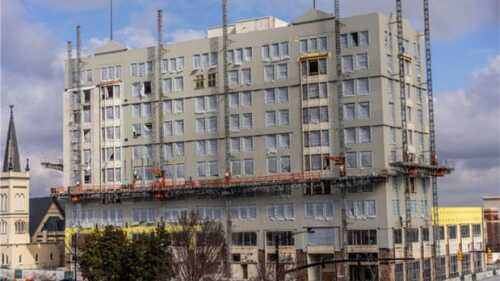Community and Neighborhood Development
A decade in the making, the South Boston waterfront neighborhood is emerging as a preferred destination for commercial and residential tenants.
Hit by two major hurricanes in 2017, St. Croix —one of the U.S. Virgin Islands—is oised to receive nearly $2 billion from the Federal Emergency Management Agency, a portion of which could potentially transform the island’s current social and economic footing if used strategically.
In early August, a ULI Advisory Services panel spent a week touring area development projects in Erie, Pennslyvania, focusing on Erie’s downtown revitalization and working within the city’s economic and cultural environment.
How can the real estate industry do a better job of meeting the needs of middle-income renters and buyers?
In April, ULI Advisory Services presented recommended redevelopment possibilities for the 24-acre (9.7 ha) site of Bloomington Hospital—a campus in Bloomington, Indiana, that will move its operations in 2020.
Business improvement districts and other stakeholders are leveraging live music performances and other activities as a draw—both to prospective commercial tenants and to residents and visitors. Participants at a recent ULI Washington panel discussed both best practices and complicating factors when adding live-performance spaces to a neighborhood.
A recent ULI Advisory Services panel, funded entirely by the ULI Foundation, provided recommendations specific to the city of Los Angeles but adaptable to other metropolitan areas.
“Real estate development is a high-stakes gamble,” said Michael Maher of the WestEdge Foundation. Maher joined five other developers in discussing their current projects at the ULI Carolinas Meeting in Greenville, South Carolina.
Like many areas of the United States, California is facing a housing affordability crisis in its most populous area, and the San Francisco Bay area is ground zero, with sky-high rents and housing prices. To help address the issue, ULI San Francisco created the Housing the Bay initiative in early 2017. Through research, events, and workshops, the initiative aims to explore the underlying causes of the Bay Area’s high housing costs and inadequate housing supply and propose solutions.
In December, Moody’s Investors Service issued a report encouraging cities to invest in climate adaptation and mitigation. Cities will be evaluated in the future at least in part on how they prepare for both short-term climate “shocks” and longer-term trends associated with climate change. Moody’s is the largest credit rating agency to date to publicly outline how it evaluates climate change risk and integrates it into its credit rating assessments.








